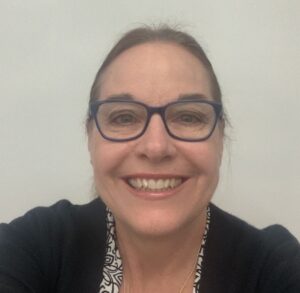Happy Teacher Appreciation Week!

At Impact Florida, we have been working with a fantastic group of teachers from across the state for our Solving with Students Cadre, specifically designed to improve student learning in math and aid teachers in professional learning by utilizing student feedback. We wanted to take this week to honor some of our dedicated and passionate educators by introducing you to some of our cadre participants.
Lori Antos teaches Algebra 1 and Geometry at Buddy Taylor Middle School in Flagler County, and she has been teaching for 14 years. She has a reputation at her school for creating engaging and rigorous lessons. Lori participated in the cadre in order to improve the academic success of her students and increase her engagement with them. As part of the cadre, Lori is using a free, research-based tool called Elevate, designed by PERTS, to survey her students, learn best practices to address student feedback, and then incorporate new strategies in the classroom, in alignment with the Five Conditions that Support Great Teaching.
“I have been impressed with Lori’s curiosity and determination to make changes to her teaching practice to better serve her students. Lori has made a few small shifts, investigating feedback from her students on their classroom experiences and it has led to big impacts,” said Kelly Zunkiewicz, Director of Educator Innovation at Impact Florida. “Her students recognize she is not only seeking out their feedback but acting on it by making changes in the classroom.”
Lori shared her experiences with the Solving With Students Cadre in the following Q&A:
What interested you about this cadre and the idea of getting student feedback?
I have always felt I had a good rapport with my students, and I felt this would be a great opportunity to confirm that. I was also interested in getting student feedback.
What did the first round of survey results say, how did you feel about them, and what did you learn?
I was surprised at the results of the first survey. I thought I had a better connection with my students, but the survey showed differently. The biggest surprise was the low scores in the category of Meaningful Work.
Were students involved in interpreting the results, and did you find out why they gave the feedback? Why did you think it was important to engage them in what you were working on?
I felt it was very important to engage the students in what I was working on, so I created a Google form of the activities we do and asked my students to rank them. I also asked for input on what other teachers do for meaningful work that they like, and I was able to observe one of those classes. They also wanted to pick their own learning partners, so I let them decide which person they would work best with. Most of the students picked wisely (although a few did not!), and their test scores improved. For the next survey, the numbers increased for meaningful work, which I think is because they were able to have input and looked at some of the activities in a different way.
Tell us about your approach with letting students choose their partners and their teams? How is this working?
Allowing students to pick their teams has increased the amount of work they’re doing. When they do get off task, I remind them that they picked this group because they felt they would do better, and that usually gets them back on track. They seem to be empowered when they are able to make some decisions over the way they learn, and they work harder.
Tell us about your morning “affirmations.” What do you focus on, and why do you do them?
I have been doing my morning affirmations for four years now, and I’ve found that most of my classes enjoy doing them. It’s a way to let students know class is starting and that we are ready to work. The affirmations that we use are:
- I believe in myself.
- With effort and determination, I can succeed.
- I can learn more from failure than I do from success.
- My potential is limitless.
Why do you think student experience matters to math achievement? What results have you seen, academic or otherwise, from the strategies you’ve used?
If students don’t feel a part of their learning process and know that they’re valued, they don’t see the value in learning. This cadre has opened my eyes to the need to get student buy-in. They try much harder when they feel comfortable in their learning environment.
Thinking about past opportunities for professional learning, what has made this different?
The fact that this is an ongoing learning process makes it unique and very useful. Most professional learning lasts one or two days, with a follow-up, and if you don’t incorporate it immediately it is forgotten.
